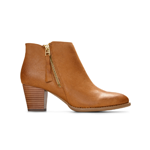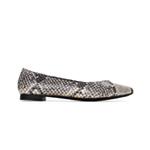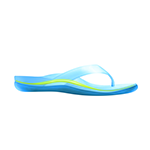BEST BOOTS FOR PLANTAR FASCIITIS
What Are The Best Boots For Plantar Fasciitis?
It’s time to step into a discussion about plantar fasciitis. Plantar fasciitis affects so many of us – and impossible to manage in the wrong shoes. Properly aligning and supporting the arches of the foot is a basic solution to a persistent problem, but it’s hard to find trusted information and shoes outside the world of athletes and athletic footwear. To the staggering statistic of individuals with plantar fasciitis, comfort isn’t a luxury, it’s a necessity. Shoes and foot health should be one and the same – and for those of you with plantar fasciitis, it’s the difference of pain and comfort. When researching shoes for plantar fasciitis, you should feel informed, so you can feel unstoppable. If you’re on the hunt for boots for plantar fasciitis, women’s and men’s footwear often fall short of considering the infrastructure and support needed for those suffering from plantar fasciitis and the associated pain.
We want to help you understand plantar fasciitis and look for the best shoes for plantar fasciitis. We have earned a place in the industry as a trusted resource that has dedicated foot doctors, research teams, and shoe stylists, to solve a problem that demands to be addressed. Along the way we’ll educate you on what plantar fasciitis is, why supportive footwear is vital, and how to find the best boots for plantar fasciitis.
HOLD ON… WHAT EXACTLY IS PLANTAR FASCIITIS?
Before you can get to shoe shopping for the perfect pair of boots for plantar fasciitis, first let’s review what’s going on in your feet, one step at a time.
By now we know plantar fasciitis is a common condition. It’s also one of the leading causes of ankle and heel pain. But what is it, exactly? The plantar fascia is the thick fibrous band of tissue that runs from your heel bone of the foot all the way up to your toes. When this gets inflamed, you’re going to feel varying levels of pain and discomfort.
The cause of inflammation of the plantar fascia is due to it being stretched too much, which causes stress on the tissue. Over time, continued stress can lead to tiny tears developing on the surface of the plantar fascia. These small tears are what result in the plantar fascia becoming inflamed and subsequently causes pain and discomfort to develop. If the stretching and tearing of the plantar fascia continues, the inflammation and irritation of the tissue would worsen.
The plantar fascia is an essential part of your feet, supporting both the muscles and the arch of the support. That means this band of tissue is a powerful tool in assisting everyday movements and mobility. It also acts as a built-in shock absorption for the arch of your foot when you’re hitting hard surfaces all day long. While you don’t notice this useful piece of your body every day, you certainly do when it’s inflamed and not giving you the mobility and shock absorption you need.
A common myth is that plantar fasciitis is a byproduct of bony growths that can develop on the heel, called heel spurs. This myth was busted as foot research has advanced. What researchers have found is that heel spurs are actually a result of plantar fasciitis and long-term inflammation. This means spurs are the byproduct of plantar fasciitis rather than the cause.
Do you experience plantar fasciitis pain when taking the first few steps of the day or after rising from a sitting position? You may experience sharp, stabbing pains in the heel and bottom of the foot. Foot pain is the strongest indication of plantar fasciitis. Though the pain usually subsides after continued movement, it can be worsened by constant strain and inflammation, exacerbating the irritated plantar fascia. Plantar fasciitis pain varies in severity and frequency depending on the individual and the amount of irritation affecting the plantar fascia. You’ll want to get relief and comfort as soon as possible, and we want to help!
How to Find the Perfect Boots for Plantar Fasciitis
If you feel like the fashion industry does not consider comfort, or that the foot health industry doesn’t consider fashion, you’re not alone. Finding trendy leather boots when you suffer from plantar fasciitis can be a challenge. Many boots don’t consider supportive features and infrastructure needed to make sure your foot is properly aligned with your body, to keep you moving comfortably wherever your favorite boots are taking you. We’re here to help. In fact, we built our business on that. Here’s a comprehensive guide to support you in finding the best boots for plantar fasciitis.
Determine Your Arch Type
When it comes to arches, there is no one-size-fits-all. So, before you go searching for the right pair of boots, it is important to understand the structure of your foot and what type of support it needs. Arch height can vary significantly from individual to individual and can have a tremendous impact on the fit and overall effectiveness of footwear. For example, someone with extremely high arches will need to look for shoes that have a more substantial arch support to fill in the space between the arch of their foot and the ground. On the other hand, individuals with low arches (flat feet) will need to look for supportive footwear with lower arch support so that it fills the space of the arch while still being comfortable.
At Vionic, we believe that when you are equipped with information, you can choose footwear that addresses your unique needs. After all, everyone deserves shoes that make them look and feel great! To help you determine your arch type, we have compiled a list of basic information about the three types of arches.
- Low Arches/Flat Feet: Roughly twenty percent of the population have low arches, which means there is little arch definition and the arch of the foot sits very low to the ground. Because of their construction, feet with low arches are considered biomechanically imbalanced, and this makes individuals with low arches more susceptible to over-pronation, which occurs when the foot rolls too far inward with each step.
- Medium Arches: Medium arches are the most common arch height and account for roughly sixty percent of the population. Feet with medium arches are considered biomechanically efficient, unlike those with low arches or high arches. Feet with medium arches have a defined arch and are less flexible than feet with low arches.
- High Arches: Like low arches, roughly twenty percent of the population has high arches. Individuals with high arches possess a well-defined arch that is higher off the ground than individuals with low or medium arches. For example, if you dip a foot with high arches in water and then place it on the ground, the wet imprint left on the ground will show a gap where the arch of the foot is because of how high it is off the ground. Instead, the imprint will consist of the ball-of-foot and the heel cup, with very little to no arch area showing. Because of their unique construction, feet with high arches cause more pressure to be placed on the forefoot and rearfoot, this means that when stepping, walking, or running, these areas have to absorb more impact and shock because high arches decrease the surface area of the foot absorbing the impact. Feet with high arches are prone to developing plantar fasciitis and heel pain because of this increased pressure on the feet.
By identifying the type of arch you have, you can make an educated decision about what type of support is ideally suited to the unique construction of your foot, ankle, and arch height to make sure that the boots you select provide the comfort and support your feet need.
Arch Support, Made Simple!
Once you have determined the type of arch you have, the next step is to narrow your search to boots that contain good arch support depending on your arch type. Many people do not realize how integral the arch is in everyday movements and mobility, such as walking. The arch is one of the most important structural elements of the foot and is responsible for absorbing the pressure that is exerted upon the feet with each stride and step you take. With every mile walked, the arch of the foot bears between two hundred thousand and three hundred thousand pounds of stress. When an individual is suffering from plantar fasciitis, the band of the tissue supporting the arch, the plantar fascia, is inflamed and irritated due to small tears on the surface of its tissue. Because of this, it is important that individuals with plantar fasciitis make sure that their footwear, including boots, have the right arch support for the arch of their feet. Making sure the feet have proper arch support can help to prevent potential musculoskeletal issues due to improper support from footwear and can help to alleviate discomfort and pain. Supportive shoes with arch support can help to reduce tension and pressure exerted on the fascia while reducing over-pronation and under-pronation.
Think Of Sole Cushioning As Clouds For Your Feet
At this point in the article, you’re an expert on plantar fasciitis heel pain. So you know, that one of the primary byproducts of plantar fasciitis is heel pain, which makes it vital to keep in mind the importance of sole cushioning when looking for the perfect leather boots for plantar fasciitis. To help ease the pain and add heel support while walking, it is important to look for orthotic boots that have proper sole cushioning to absorb the impact when the heel hits the ground during each stride. In addition, it is essential to make sure that the heel cup of the boot fits well as it can help to avoid damage to the heel bone and reduce pronation and supination that can further inflame the plantar fascia. When looking for the perfect pair of boots for plantar fasciitis, always check to make sure they have adequate sole cushioning to keep your heel comfortable and supported. A shoe without a proper cushion can make wearing them for long periods of time uncomfortable, bringing more damage to your foot.
Make Sure They Fit Your Style
While proper support is of the utmost importance, finding boots that fit your style is also essential. We get it! As fashion lovers ourselves, we know first hand that you shouldn’t have to sacrifice style for support; you can have both. If you buy boots that don’t truly match your aesthetic and style, you will be less likely to wear them consistently, which defeats the purpose of purchasing them. To avoid this, make sure that the boots you select fit your wardrobe and style so that you will want to wear them frequently and maximize their benefits for your feet and plantar fascia. Finding supportive boots that are still stylish can be difficult, it is necessary to find a company that combines leading technology with fashion-forward style to make sure that you receive the support you need in an elegant and sophisticated pair of boots. Whoever says beauty is pain hasn’t tried walking a mile in Vionic Orthaheel boots!
The Benefits of Supportive Boots
Once you have found the perfect pair of supportive boots for plantar fasciitis, prepare to experience the numerous benefits of having boots that properly support the foot. Below are just a handful of the top benefits of supportive boots.
- Supportive boots provide your feet with the support they need to prevent plantar fasciitis inflammation from getting worse.
- Supportive boots provide you with unparalleled comfort because they make sure each part of the foot is properly supported.
- Supportive boots can help to reduce foot pain by alleviating stress and pressure placed on the plantar fascia. Without proper arch support, the plantar fascia can become more inflamed and irritated leading to intense pain.
- Supportive boots can help to increase blood flow to the ankles and feet by making sure the foot is properly aligned, which can help to reduce swelling.
- Supportive boots can help to improve balance by making sure that the foot is properly supported, which helps to reduce stress on the muscles of the legs that impact balance.
Vionic’s Supportive Boots for Plantar Fasciitis
If you are looking for the best boots for plantar fasciitis, look no further than Vionic’s supportive boots for all seasons. All of our leisure and work boots are built with a deep heel cup, orthotic technology, and good arch support to provide you with superior comfort in every step. Our mission is to create footwear that hugs your arches like a natural footprint giving you comfort and pep in your step all day (or night) long!
Vionic’s Orthaheel boots have seamlessly combined pioneering biomechanics technology, high-quality materials, plantar fasciitis insoles, and fashion-forward style to deliver beautifully made boots that provide unparalleled support. With Vionic’s supportive boots, no corners are cut, which allows you to live stylishly and comfortably. From women’s shoes to men’s shoes, we have the perfect pair of shoes for you. Whether you’re looking for dress shoes or walking shoes, you’ll find the support you need in the style you desire.











